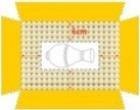Packing With Care
Parcels can travel many thousands of miles through our carrier partners, sophisticated global networks to reach their destinations. Whilst the carriers do everything that they can to ensure your packages are delivered on time and in a great condition, it’s down to the sender to ensure, that they are packaged sufficiently.
Its therefore imperative that the sender packs their parcels with the right materials to ensure their shipments arrive safely and intact.
What’s Best for What You’re Shipping?
Good quality packaging is ESSENTIAL when it comes to preventing damage when delivering your goods. Therefore choosing the right packaging is an essential step in determining what’s best for the type of goods you wish to transport.
The money you might save on reusing old boxes or dare we say it, choosing ‘cheap’ packaging, will more than cost you in the long run in lost or damaged items.
Weight
Cost
Regulations
Fragility
Packaging Protects Your Shipment
Good quality packaging is critical to protecting your shipment during transportation. The following provides some general guidelines to help.
Material
- Always use high quality corrugated cardboard boxes for parcels. For fragile or heavy items, double-wall or tri-wall constructions are recommended.
- Avoid reusing old boxes as they may have lost some of their rigidity.
Strength
- Look out for the manufacturer stamp which tells you information about the construction type and strength of a box. Ask your box supplier for more information as required.
- Refer to the box specifications below to select suitable packaging for the weight of your shipment.
Size
- Under-filled boxes may collapse and over-filled boxes may burst. Prevent this by choosing a box with the right size for the content being shipped and fill any spaces with bubble wrap, inflatable air sacks or foam chips.
Apply Packing Techniques
Here are some important principles applicable for packing your shipment contents.

Leave No Empty Space
It is important to completely fill empty space within the box to avoid contents moving during transit which can cause damage to both contents and box.

6 cm Distance
Always place items being shipped in the centre of the box with at least 6cm of separation from any external walls or corners.

Wrap Items Individually and Use Dividers
When shipping multiple items in a single package, always wrap each item individually and separate with corrugated inserts or other divider materials as appropriate.
Protect with a Good Seal
Both the adhesive tapes you choose and how you seal the shipment together makes a difference in protecting your shipment contents from being exposed or damaged during transit.
Use Pressure Sensitive Tape
- Polypropylene tape (brown plastic tape)
- Vinyl adhesive tape (electrical tape)
- Fiber-reinforced paper tape (duct tape)
Don Not Use
- Kraft Paper Tape
- Cellophane Tape
- String
H-Taping
Ensure all seams are sealed using the H-taping method:

Step One
Apply 1 strip of tape along the centre seam

Step Two
Apply 2 strips of tape across both edge seams

Step Three
Ensure all tape is secure around the edges
Applying Shipment Label
Displaying the shipment labels clearly is important in ensuring that your shipment moves swiftly through our carrier partner networks.
One of the biggest reasons for ‘lost’ items, are where the delivery label has come away due to insufficiently attached labels.

Label Shipment
Fix the shipment label securely on the top surface of the shipment box.
This will help them to keep your shipment in an upright position as much as possible during transit!